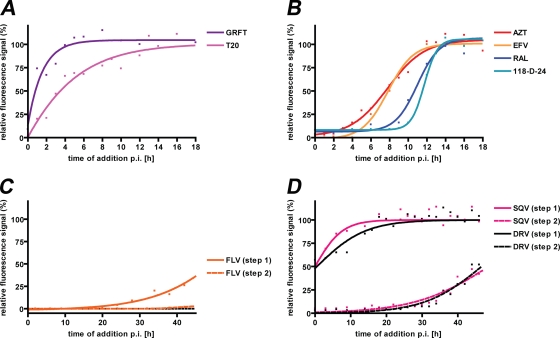FIG. 4.
Discrimination of sequential stages of HIV-1 replication by time-of-addition assays with HIV-inhibitors against known targets. HIV inhibitors that prevent HIV entry into host cells (A), reverse transcription (AZT and EFV) and integration of viral DNA into the host genome (RAL and 118-D-24) (B), HIV transcription (C), and virion maturation (D) were assayed, as indicated on the figure. HIV-1IIIB virus preparations were added to LC5-RIC cultures at time point 0. Anti-HIV compounds were added to the cultures at different time points after virus addition (i.e., p.i.). Final concentrations of inhibitors in wells were ≥2× EC50. Plates were incubated for a total period of 48 h after virus addition, and cultures were assayed for HIV reporter expression (solid lines; step 1) or for amounts of infectious virus in culture supernatants (dashed lines; step 2). Fluorescent signal intensities of treated cultures were related to those of cultures infected without inhibitors (set at 100% infection). Each data point represents the mean of values measured in at least three wells for a single time point. R2 values for each curve were ≥0.95.

